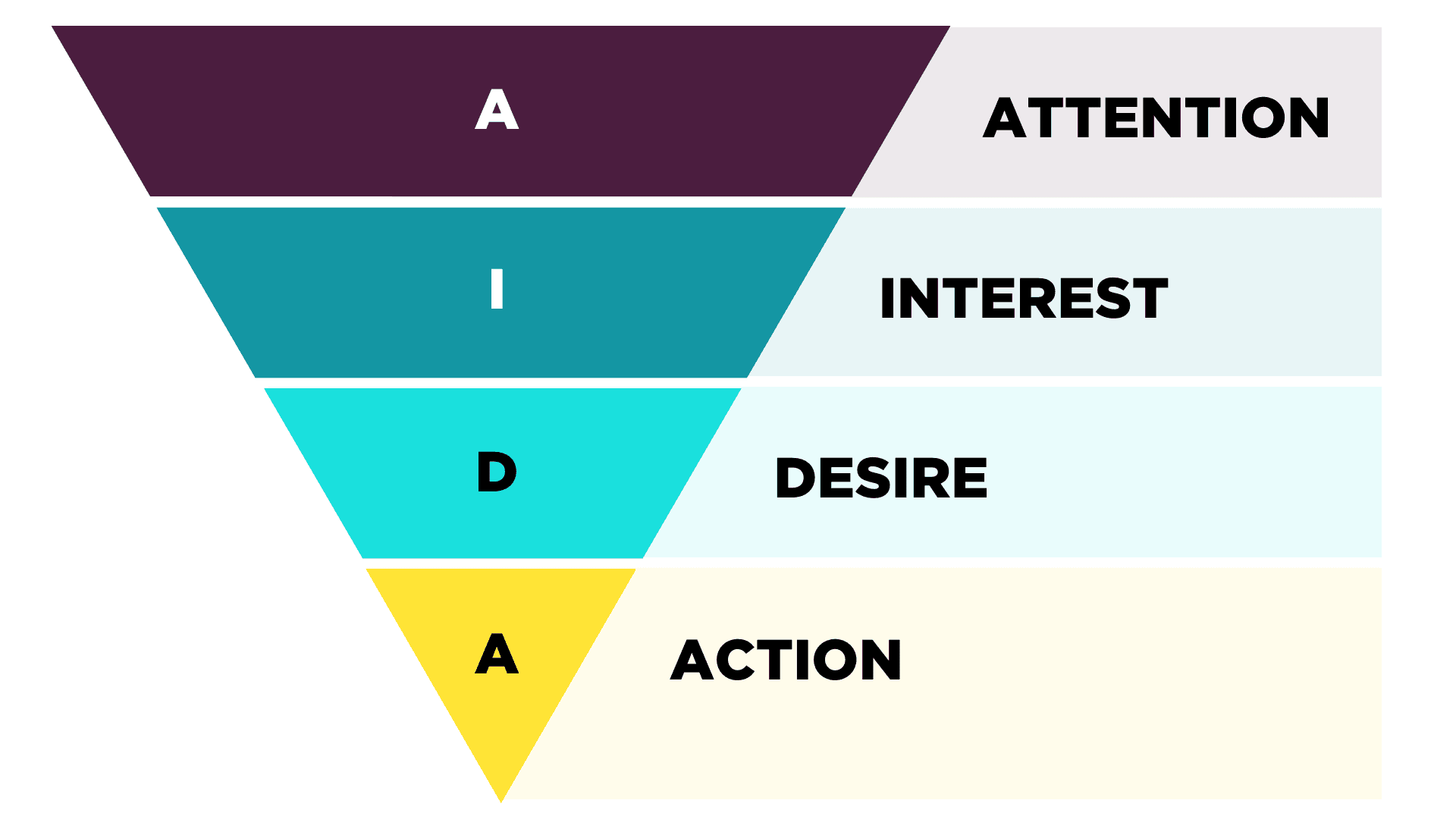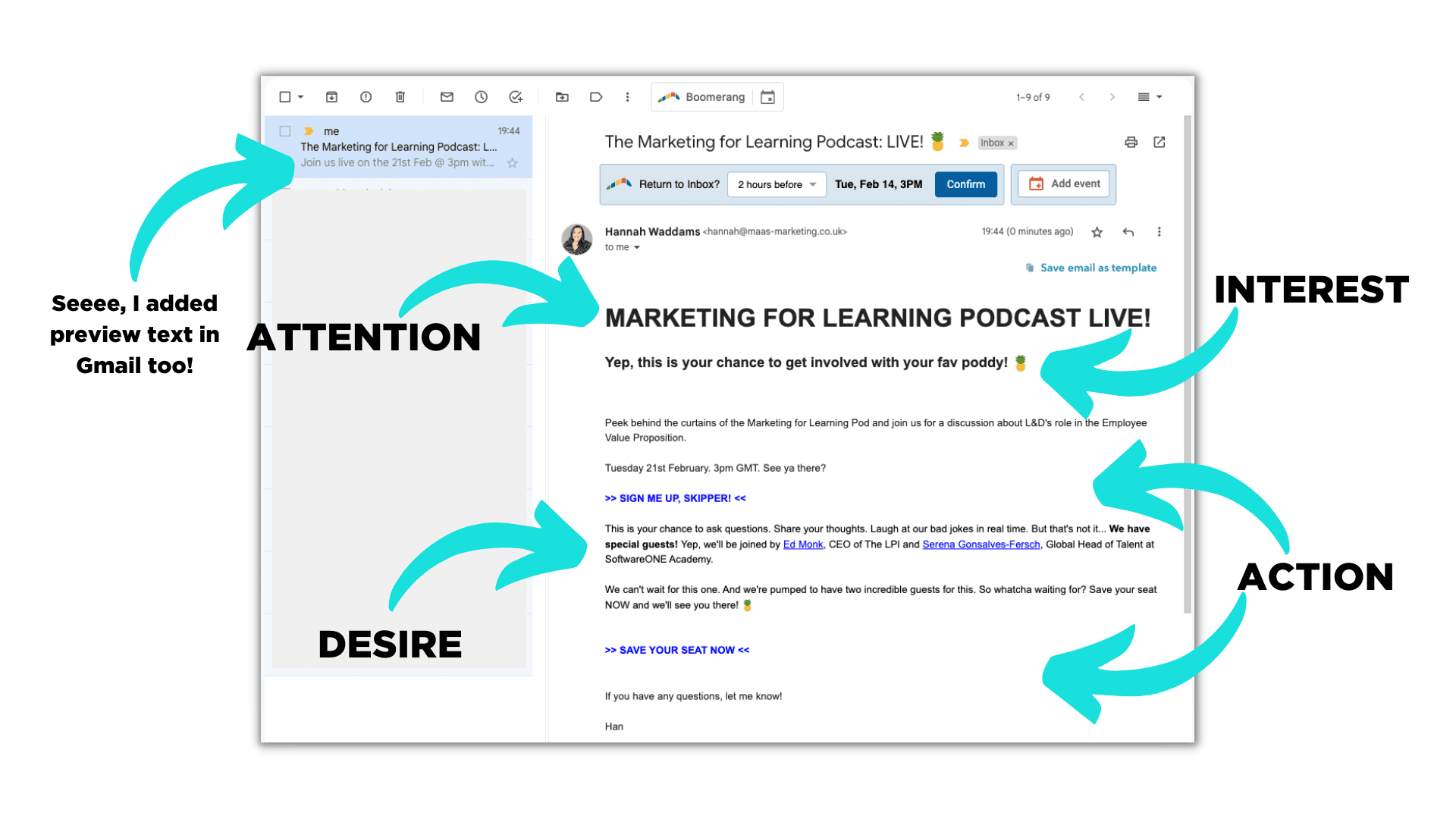want some cookies?
We use cookies to make your browsing experience amazing.

Email marketing is one of the most effective tools L&D can use to engage with their people. The majority of our target audiences spend a lot of time on their computers (and checking their emails) – and those who are not in desk-based roles rely on email as their official method of communication with work. So it’s easy to see why email marketing in L&D is a hot topic. But having worked in this industry for nearly a decade, I’ve come to the conclusion that there are three types of L&Ders when it comes to email marketing.
- The first avoid it at all costs. It’s crowded. It’s noisy. Nobody will read my email, so why should I bother?
- The second think they’re pros at email marketing – and they’ll continue to send monthly newsletters with poor open and click-through rates forever.
- The third knows the power of email marketing and wants to learn more.
And given that you’re reading this blog post, I’d hazard a guess that you’re the third kind of person. So I’m going to help you out, and share my top tips for email marketing in L&D.
1. Send Your Email From A Human
It’s in our nature to trust other human beings more than we trust an abstract being (such as a company or team!) And this is proven true when it comes to email marketing. Emails from a name (for example, Hannah from MAAS Marketing) are much more likely to be successful than just the company name (e.g. MAAS Marketing). This is true for L&D communications too. Your colleagues are more likely to open and engage with an email that is from you, rather than one that is from “The L&D team”.
In fact, research shows that 45% of people choose whether or not to open an email based on the sender’s name, so use that to your advantage. Stop hiding behind your team and be proud of the marketing comms you’re sending out!
2. Focus On Your Subject Line
Subject lines are one of the most important aspects of email marketing, yet they are the most frequently overlooked. If you spend hours perfectly crafting your email, only to spend 30 seconds typing a boring subject line, you’re doing yourself a disservice. Think about it for a second – the purpose of the subject line is to get someone to open your email. And if nobody opens it, they’ll never see your perfectly crafted design, will they? So surely your subject line deserves a little TLC too?
Here are my three top tips for writing the perfect subject line:
- Keep it short and sweet. Your people tell you how busy they are, so respect their time and make your subject line snappy. Plus, if your audience opens your email on a mobile device, long subject lines will be truncated anyway!
- Use verbs at the start of your subject line. Verbs trigger an action, and isn’t that what we want? Use words such as ‘watch’, ‘discover’ and ‘learn’ at the start of your subject line to encourage opens!
- Never use all capitals or multiple exclamation marks. You’re not just competing for your audience’s attention, you also have to make it through spam filters for your email to be seen. Capitals & multiple exclamation marks are a sure-fire way to find yourself in the spam folder. Just don’t do it!
3. Utilise preview text
Preview text is the short bit of copy that you see in your inbox after the subject line. It gives your readers an idea of what they can expect to find in your email. The example below is from my personal inbox – and shows how Dunelm have used the preview text to elaborate on their catchy subject line.

We must utilise this more in L&D, to provide context or details and pique the curiosity of our target audience.
And if you’re thinking “okay Han, but I don’t have a fancy email platform which allows me to put in preview text”, it’s time to think again! If you’re using Outlook or Gmail (or a similar email service provider) and don't have the option to add, add the text you use as preview text to the top of the body of your email in white font. This way it’ll pull through as preview text, but will be invisible in the body copy. Us marketers are sneaky, aren’t we?!
4. Use the AIDA model!
We talk about the AIDA model a lot at MAAS - and that’s because I genuinely believe it’s one of the most effective marketing tools out there. Often it’s used as a journey or a funnel, but in this example, I want you to imagine the inverted triangle below on top of your email.

The top of your email is about grabbing attention, then you want to pique readers' interest, then spark desire, and finally you have to encourage action. Let’s look at this in action:

And again, you might be thinking “Han… you’re using a fancy email tool again!” So let’s look at the same email copy in a text-only, Gmail email.

And remember, you can include images in your Outlook or Gmail emails, but I was just proving a point here?
5. Segment your audience
Segmenting audiences is something that’s overlooked too often in L&D. But segmentation is super important in email, and can truly transform the impact you get from your efforts. Developing learner personas are the single best way of doing this.
Learner personas are a fictional representation of your target audience, and are formed based on qualitative and quantitative research, coupled with your assumptions. Yep, we’re giving you permission to make a few assumptions here (as long as you’re testing them over time!) The aim of your research is to find unifying wants, needs, fears and pain points of your audience. It’s only by understanding this level of detail about your audience that you can craft an email that really taps into their emotions, and gets them moving! If you want to learn more about creating learner personas, check out this post from Ash.
6. Test! Test! And Test Again!
Testing is a marketer's best friend, and this rings true for email marketing too. The only way you can decipher what truly works for your unique audience is testing. And when it comes to email - you should be testing everything. Test your subject lines. Test your ‘from’ name. Test your preview text. Test your layouts. Test everything.
The most effective way to test your emails is A/B testing. A/B testing is the process of sending one variation of your email to a subset of your audience and a different variation to another subset of the audience, with the ultimate goal of working out which variation of the email garners the best results. The key to effective A/B testing is to change ONE single feature on an email at a time. For example:
- If you want to test a subject line, then your ‘from’ name and preview text should be identical in both variations.
- If you want to test a layout, then your content and copy should be identical, aside from the layout.
- If you want to test the impact a ‘from’ name could have, you should keep the subject line and preview text the same.
It’s Time To Make Real Impact With Email
If used correctly, email marketing can truly transform engagement with your learning offering. All too often we see ineffective emails being sent to everybody in an organisation, with no real thought or strategy behind them. And of course - this doesn’t work. But if you use these tips, and integrate email into your Marketing for Learning® campaigns, you’ll soon realise the real power of email marketing in L&D.









